Instrumentation
GC/Q-TOF Instrument Analyzes Volatile Samples

The 7250 gas chromatograph and quadrupole time-of-flight mass spectrometer (GC/Q-TOF) uses a lowenergy electron ionization source to identify volatile and semi-volatile compounds. Such samples usually require alternative techniques or longer sample preparations. The GC/Q-TOF detects trace-level target compounds in the presence of more abundant matrix compounds. Its wide in-spectrum dynamic range ensures data quality even for narrow chromatographic peaks. The unit handles high-throughputs at data acquisition rates up to 50 spectra/sec.
Agilent Technologies

Valve Position Transmitter Safeguards Critical Safety Systems
The Digital Epic-2 valve position transmitter performs emergency shutdown monitoring, partial stroke testing, and solenoid-operated valve testing for safety valves. It preserves the integrity of critical safety systems and ensures effective maintenance up to Safety Integrity Level (SIL) 3. The unit delivers discrete position control and predictive diagnostics. Intelligent alarms pinpoint the root cause of problems and predict necessary valve maintenance. The transmitter provides noncontact position digital feedback via highway addressable remote transducer (HART) 7 and dynamic synchronous transfer mode (DTM) protocols.
Westlock Controls

Free-Chlorine Analysis System Requires No Reagents
The amperometric free-chlorine analysis system analyzes water samples disinfected with chlorine without costly reagents and the accompanying required maintenance. The panel-mounted system includes a digital amperometric free-chlorine sensor and a digital pH probe mounted in an integrated flow assembly. A lead-free regulator sets system pressure at 15 psi. The pH-compensated measurement ensures accurate N,N-diethyl-1,4 phenylenediamine sulfate (DPD) verification, and a separate 1/4-in. sample valve enables a DPD verification test for residual chlorine without interrupting system measurement. A needle valve in the flow assembly maintains flowrates between 30 L/hr and 120 L/hr, and an inductive low-flow alarm switch indicates when flow is too low for proper measurement. The analyzer employs U.S. Environmental Protection Agency (EPA) Method 334.0 for the determination of residual chlorine in drinking water using an online analyzer.
Endress+Hauser
Probe Reliably Measures Vaporized Hydrogen Peroxide
Hydrogen peroxide is used extensively in biodecontamination and sterilization applications, and the repeatability of measurements is important to achieve reliable verification of biodecontamination. The HPP272 probe measures vaporized hydrogen peroxide with high accuracy and repeatability. The device also measures temperature and humidity, both relative humidity and relative saturation. The probe incorporates a Humicap sensor that was developed for measurement of relative humidity and a Peroxcap sensor that was developed for measurement of hydrogen peroxide. The Peroxcap sensor uses an algorithm and heating function that prevent water from condensing on the sensor, which ensures reliability even in high humidity. In addition, the sensor has a purge function that helps maintain measurement accuracy between calibrations and extends the operating life of the probe. This function heats the sensor rapidly to remove possible impurities.
Vaisala
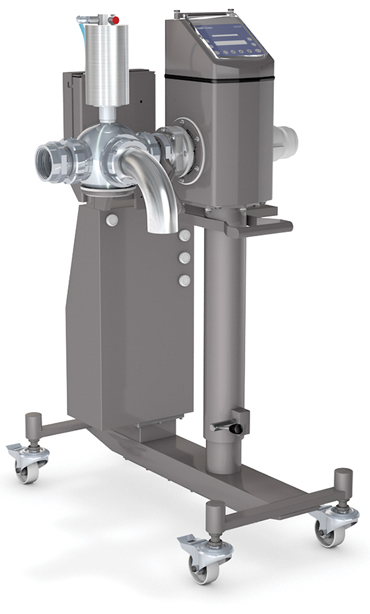
Metal Detector Identifies Contaminants in Vacuum-Filling Lines
The HDS pipeline metal detector identifies ferrous, nonferrous, and non-magnetic stainless-steel contaminants in applications such as food processing and inspection of high-viscosity liquids. It detects non-spherical contaminants such as metal clips, wire, swarf, and slivers introduced during grinding processes. It is constructed of stainless steel and can be integrated with vacuum fillers and other processing equipment. The detector is sealed to Ingress Protection (IP) 69K, which enables it to withstand stringent wash-down regimes in food processing plants. The short length of the throughput tube and use of zero-metal-free zone technology minimizes uneven distribution of fats toward the outside of the product, and enables metal fittings and other process equipment to be located close to the detection head without compromising detector performance.
Mettler-Toledo
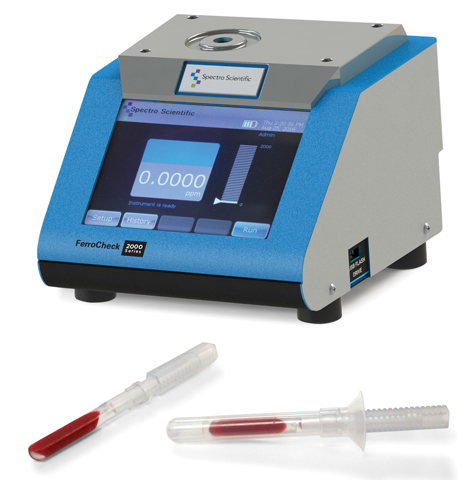
Portable Magnetometer Detects Ferrous Particulates in Grease
The FerroCheck 2100 portable magnetometer quantifies up to 15% ferrous debris in grease. One challenge for grease analysis is the introduction of a small amount of sample per test to ensure reproducible measurement. A newly designed sampling boat simplifies the task and requires less than 1 mL of grease sample. The magnetometer measures total ferrous content in parts per million (ppm) by weight, and can detect particles from nanometers to millimeters in size. The instrument enables users in the field and in laboratory settings to accurately gauge evidence of ferrous wear and use the data to support condition-based maintenance programs for engines and machinery in industrial and fleet applications. The unit complies with ASTM International Standard D8120, Standard Test Method for Ferrous Debris Quantification.
Spectro Scientific
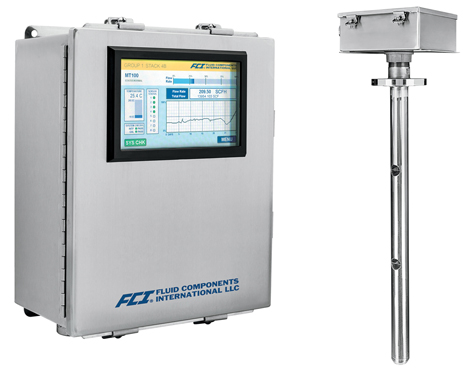
Flowmeters Precisely Measure Air and Gas Movement in Large-Diameter Pipes and Ducts
The MT100 Series multipoint thermal mass flowmeters provide temperature-compensated direct mass flow measurement of air and gases for precise, repeatable measurements in large-diameter pipes, stacks, and rectangular duct installations. The flow-meters are available with two to eight flowrate sensing points. The output of sensors at various depths in the pipe or duct are averaged to determine the flowrate. The sensors can be installed either across a mast or inserted in a single plane. In large stack applications, the instrument installation can be done cost-effectively at a single platform location. The flowmeters have no moving parts and can measure processes at temperatures of –50°F to 850°F with accuracy of ±2°F. They can measure flowrates of 0.25–1,000 sfps with a 100:1 turndown and accuracy of ±0.75% of the reading and ±0.5% of full scale. A color touchscreen LCD readout displays flowrate, temperature, and totalized flow.
Fluid Components International
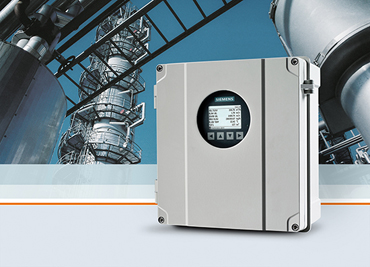
All-in-One Digital Flowmeter Monitors Gases and Liquids
The Sitrans FX330 vortex flowmeter monitors flow, pressure, and temperature in a single, digital two-wire device. The instrument is appropriate for process applications, as well as heating, ventilation, and air conditioning (HVAC) and auxiliary systems. It detects a variety of process values, including volumetric flow, mass flow, standard volumetric flow, density, temperature, pressure, and heat energy. Gross and net heat calculations support energy management. Integrated reduction of nominal diameter permits a large turndown ratio and reduces installation costs. Redundant data management allows exchange of electronics without the loss of calibration or configuration data. The unit meets International Electrotechnical Commission (IEC) 61508 Safety Integrity Level (SIL) 2 standards and is suited for use in hazardous environments.
Siemens
Electric Actuator for Functional Safety Meets Certification Requirements
The TEC2000 with TEC2 Electronics (Safety Integrity Level [SIL] option) electric actuator has met functional safety certification requirements of Exida, an organization accredited by the American National Standards Institute (ANSI) that provides safety certifications for the process industries. The certification ensures that the device meets functional safety requirements for SIL 3 capability as specified by International Electrotechnical Commission (IEC) 61508:2010. The actuator provides configurable nonintrusive electronic control in process applications.
Emerson
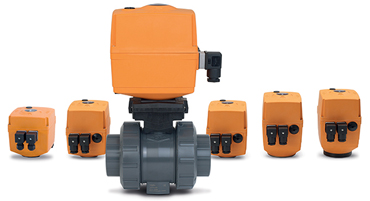
Electric Actuator Is Suitable for Quarter-Turn Valves
The EA15 electric actuator produces a nominal torque of 10 Nm and a peak torque of 20 Nm for quarter-turn valve applications. Light-emitting diode (LED) indicators that display valve position and actuator status are useful for low-light conditions or from a distance. The actuator has open/close limit switches, a seven-segment error code display, an adjustable internal heating element, and a chemical-resistant polypropylene housing. The unit uses an International Organization for Standardization (ISO) 5211 universal mounting pattern, is manufactured under ISO9001 for quality, and meets ISO14001 for environmental management. It carries certifications for vibration testing under International Electrotechnical Commission standard EN60068-2-6. It is suitable for small-diameter open/close functions in chemical processing, refrigeration, and water-treatment applications. An optional fail-safe battery backup is available.
GF Piping Systems

Ultrasonic Multipath Gas Flowmeter Offers High Accuracy in Custody Transfer Processes
The Q.Sonicmax eight-path ultrasonic meter detects and corrects for disturbances in the gas flow caused by short inlets, extenders, reducers, manifolds, elbows, and a variety of other piping elements common in natural gas plants, and provides for extensive diagnostics to ensure accurate readings. The flowmeter’s reflective path identifies swirl, fouling, and liquids inside the meter and the direct paths handle CO2-rich applications. Internal pressure and temperature sensors ensure accurate calculation of the Reynolds number and dynamic correction of the meter body. The meter meets the accuracy class 0.5 requirements of the International Organization of Legal Metrology (OIML) R 137-1 and 2 2012 without any exclusions.
Honeywell
Ruggedized Capacitor Functions under Harsh Conditions
The HHT Series axial-lead aluminum electrolytic capacitors deliver high performance under extreme conditions. They last for 2,000 hr at rated voltage and at 175°C. A glass-to-metal seal prevents the capacitor electrolyte from drying out. Capacitance stability at high temperature, low leakage current, and competitive equivalent series resistance (ESR) and ripple current specifications make these devices suitable for downhole drilling applications. They are available in nine capacities, from 470 µF to 4,700 µF, with ratings of 16–40 VDC.
New Yorker Electronics

Wireless Controls Package Expands Access to PLC Systems
These control panels have a wireless connection that enables access to a programmable logic controller (PLC) via a tablet, computer, or smartphone. An intrinsically safe tablet can be supplied as part of the controls package that allows users to work from nonhazardous and hazardous locations, including National Fire Protection Agency (NFPA) Class 1 Div. 1 areas. A 12-hr battery life ensures ample time to complete necessary tasks. Additional tablets can be provided for multiple-shift applications. The wireless connection has a 100-m range. Other control panel features include a fan and ventilation kit, light tree with audible alarm functions, color touchscreen human-machine interface (HMI), and universal serial bus (USB) ports for data acquisition.
Ross SysCon
Fluids and Solids Handling
Industrial Valves Resist High Temperatures
The Xomax XP3 sleeved plug valve meets American Petroleum Institute (API) 641, which specifies requirements for fugitive emission testing of quarter-turn valves. It is capable of passing five thermal cycles without any packing adjustments, in accordance with International Organization for Standardization (ISO) 15848-1 BH CO3 SSO. The Krombach KFO 9136 metal-seated ball valve, designed for use in coal gasification, refining, and power-generation applications, uses a unidirectional single seat for tight shutoff. The seat has a low-friction bearing design that enables permanent seat and ball contact under recurring thermal cycling. The standard version has a temperature range of –29°F to 500°F, and a special version for use at temperatures up to 1,300°F can be supplied upon request. The Pacific Cast Steel Valve line of cast steel gate, globe, and check valves meets API 624, an industry standard to reduce valve fugitive emissions. The gate valve’s fully guided wedge ensures smooth operation in both horizontal and vertical orientations and resists sticking. The globe valve uses a line contact between the disc and seat that enables lower seating torque and faster setup. The swing check valve’s fastener is restrained by the bonnet to eliminate the risk of a displaced disc.
Crane

Stator Is Easy to Assemble and Delivers Long Service Life
The iFD-Stator 2.0 reusable stator housing and replaceable stator is compatible with all NEMO NM Series progressing cavity pumps. The unit consists of a two-part stator housing, closing unit, elastomer collar, and cover to keep dirt out. The stator in the housing is designed to allow simple, compression-free assembly and disassembly. The defined compression for the stator is automatically generated when the elastomer collar is fastened. Replacement costs are minimized because the housing can be reused. The stator produces less pulsation and has higher fluid flow than conventional stator designs, and it requires less starting and running torque, so it is more efficient. The unit has capacities of 2–220 gpm and handles pressures up to 180 psi.
Netzsch Pumps North America
Bioprocessing
System Collects and Analyzes Large Quantities of Cell Culture Data
This cell culture data-collection tool combines the ambr 15 micro bioreactor system and the Nova Biomedical BioProfile Flex2 cell culture analyzer to provide rapid at-line sample collection and analysis of large quantities of cell culture data. A software interface controls the bioreactor for parallel processing of 24 or 48 single-use bioreactors of 10–15 mL working volume, as well as the cell culture analysis capabilities of the analyzer. The combined system simultaneously runs, samples, and analyzes cell culture conditions during cell line and media development by design of experiments (DoE). The system integrates and automates sample transfer, analysis, and feedback control in each single-use bioreactor. This enables collection of cell culture data — including total and viable cell density, viability, cell diameter, pH, PCO2, PO2, glucose, lactate, glutamine, glutamate, ammonium, Na+, K+, Ca++ — and osmolality, which can be sampled and measured in a complete cycle time of 6–7 min.
Sartorius Stedim Biotech

Single-Use Bioreactor Boasts a 4,000-L Capacity
This 4,000-L custom single-run (CSR) bioreactor offers twice the cell-culture capacity in the same floor area as standard single-use bioreactors. The unit performs comparably to stainless-steel bioreactors, producing high yields on a large scale. The bioreactor can be customized to meet specific needs, such as mixing and mass transfer for different cell lines. It uses only nonproprietary, commercially available raw materials. The disposable containers are packaged to prevent mishandling that may adversely affect film integrity.
ABEC
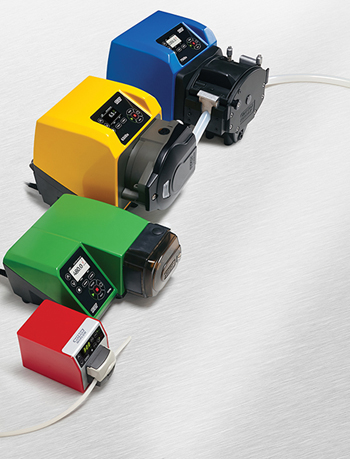
Expanded Range of Peristaltic Pumps Eases Scale Up
The Models 630 and 730 higher-flow process pumps for upstream and downstream bioprocessing extend the flow range of this pump line to 8.7 gpm. The wider range allows plants to scale production without changing or impacting the process. The pumps can be used with single-use fluid path assemblies, and they deliver accurate flowrates for handling buffers. Low-shear pumping, zero contamination, and rapid fluid transfer maintain cell viability, and pump accuracy and gentle handling support harvesting and extracting of proteins. An enhanced operator and control system with human-machine interface (HMI) minimizes keystrokes and a three-level PIN lock improves process security. Control options include manual, remote, analog, and RS485 digital communications, as well as integrated PROFIBUS networking capabilities.
Watson-Marlow Fluid Technology Group

Solvent Evaporators Enhance Visibility and Save Space
These three TurboVap solvent evaporators use gas vortex shearing technology and offer compact designs and enhanced visibility. Common features include removable and adjustable nozzles, exchangeable manifolds, evaporation flow gradients, and a touchscreen interface. A series of multiracks offer greater flexibility for processing a variety of different tube and vial sizes. The Model LV accommodates tube and vial sizes of 1.5–60 mL. The Model II provides parallel evaporation of up to six samples in either 50-mL or 200-mL glassware, with or without end-point detection. Flow gradients can be programmed into the Model II to gradually increase as evaporation proceeds, which reduces the amount of time it takes to reach the desired dryness. The Model EH integrates the Extrahera automation system for supported liquid extraction, solid-phase extraction, phospholipid depletion, and protein precipitation methods in plate or column formats.
Biotage

Copyright Permissions
Would you like to reuse content from CEP Magazine? It’s easy to request permission to reuse content. Simply click here to connect instantly to licensing services, where you can choose from a list of options regarding how you would like to reuse the desired content and complete the transaction.
